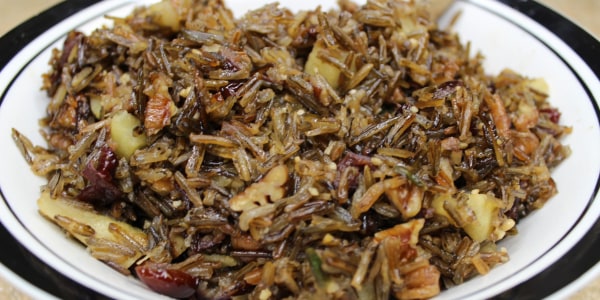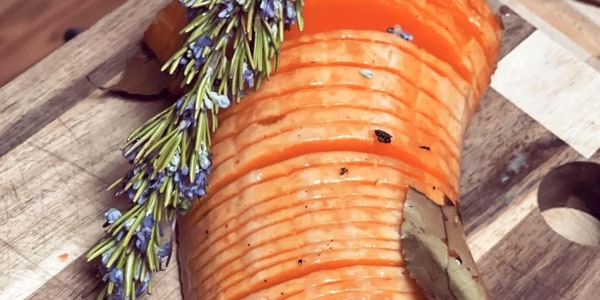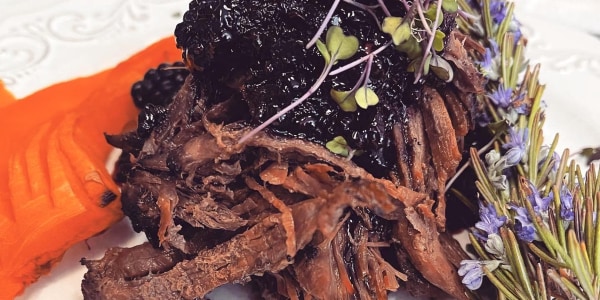For many indigenous cooks, food goes beyond basic necessities – it’s about healing and justice. In honor of Native American Heritage Month, TODAY Food spoke to some indigenous chefs about their favorite fall recipes and why they have personal and cultural significance.
Mariah Gladstone, Blackfeet and Cherokee, founder of Indigikitchen, says she uses food to resist colonization by living on the earth in these modern times. That’s how often healthy ingredients are still processed or filled with preservatives. But Gladstone says, “Indigenous foods like game, berries, corn, pumpkin and wild rice are much easier for the digestive system to process than wheat flour, dairy products and sugar.”
Kimberly Tilsen-Brave Heart, Oglala Lakota, co-owner of Et-i-quette Catering Company, uses groceries and her entrepreneurial background to empower women and youth. She focuses on finding peace and purpose in healing cultural trauma through authentic meals and mentoring.
Rich Francis, Haudenosaunee, and Tetlit Gwich’in, owners of Seventh Fire Hospitality Group, take pride in using cooking to aid in decolonization. Through his dinner series and cooking workshops for indigenous youth, he seeks to change what people consider indigenous food and believes that food is an accessible entry point into the problems of indigenous people, including diabetes, obesity and food sovereignty.
Mariah Gladstone: Wild Rice Pilaf
Mariah Gladstone and her wild rice pilaf.Mariah Gladstone
Gladstone said wild rice has cross-generational importance in Native American cultures.
“The wild rice pilaf recipe is one of my favorites for fall (and a great addition to any harvest meal),” she said. “Wild rice (Zizania palustris) is actually a grass that grows in wetlands around the Great Lakes. It is traditionally harvested by a team of two in one canoe in the pond while the other is shaking the grass seeds into the bottom of the canoe. Some of the seeds inevitably fall into the water and re-seed themselves, which will help future generations of wild rice and rice pods. “

Courtesy Mariah Gladstone
“When buying wild rice, look for ‘hand-picked’ wild rice,” advised Gladstone. “The cooking process usually uses a lot more liquid to cook than white or brown rice; for this recipe we’re actually using a 50:50 ratio of bone broth and water and adding dried cranberries to the mixture as they rehydrate themselves. The bone broth and apple juice add nutrients, flavor, and sweetness to the dish; we toast pecans (although you can substitute pepitas or sunflower seeds for a nut-free variant) and apples.
“The variety of indigenous ingredients reminds us of the gifts of the land and gives us the opportunity to share them with our families. My family often mixed leftover wild rice into the pancake mix the next day; this recipe is also perfect for mixing ( however, if that’s what you’re going to do, skip the black pepper and garlic. Cranberry, apple, pecan, and wild rice pancakes are sure to delight everyone. “
Kimberly Tilsen-Brave Heart: Hassleback Roasted Squash and Slow-Roasted Buffalo
Kimberly Tilsen-Brave Heart regularly cooks with buffalo and pumpkins.Courtesy of Chef Brave Heart MODERN INDIGENOUS ™
Tilsen-Brave Heart explained why pumpkin is an essential vegetable for Native American communities.
“These recipes speak to me because they remind me of my childhood,” she said. “Squash was a staple when we were growing up, we ate it in different ways with almost every meal. This is just a nifty variety that can be added to any meal.”

Kimberly Tilsen – Brave Heart
“Buffalo was the original Lakota nutrition center, it has supported us all year round and is considered medicine for our bodies. It gives us strength and strength to maintain our body, mind and spirit,” continued Tilsen-Brave Heart. “Pumpkin and buffalo are the traditional staple foods of the Lakota diet. They are not just ingredients, they are our connection to our history, culture and our land. By using these ingredients, we honor ourselves with the traditional medicines they provide to our bodies and feed it to our soul. ” . When I prepare these foods, it is a healing experience for me and those who consume them. Both recipes literally give me energy. “

Kimberly Tilsen – Brave Heart
Rich Francis: Moose Nose Chop
Francis spoke about the cultural significance of his elk nose chop bowl.
“Moose is highly regarded in indigenous culture and used in ceremonies from the east to west coast of Turtle Island. Fall is the time to harvest moose, but the nose is a delicacy reserved for the elders, but when You’re lucky, just go with it, “he said.
Rich Francis’ moose nose chop.
“It’s a labor-intensive dish that requires multiple steps to be successful, but the process is the goal of this entire dish. If you like textures like fat, unctuous meat, and cartilage, this is it. The hair is scorched over a fire and scraped onto the layer of skin. This is where the taste begins. It’s cooked or braised for about 5 to 6 hours, then rolled, pressed, cooled, and cut into chops or steaks and grilled like a steak. Absolutely delicious. Indigenous peoples have celebrated this preparation for hundreds of years. “
